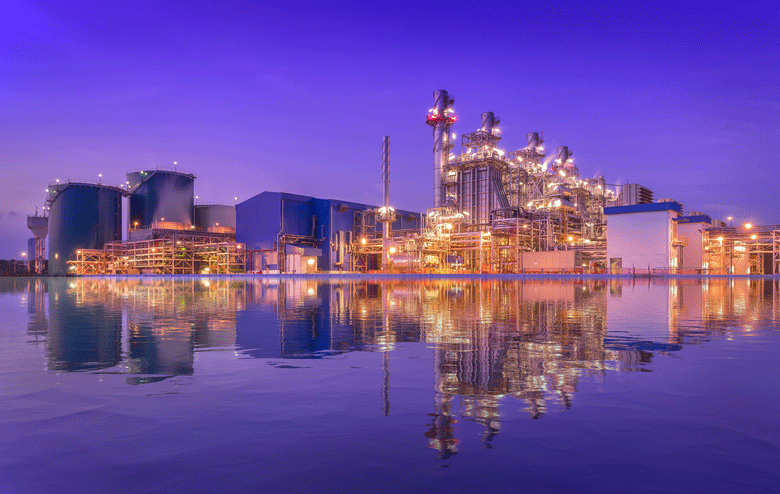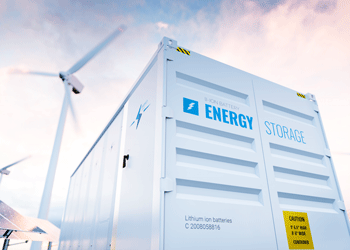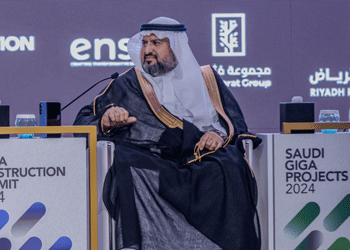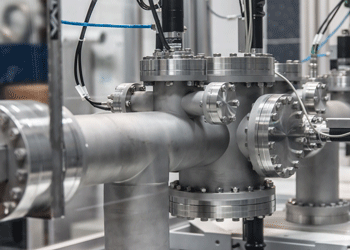Region plans vital big grid connections
29 May 2023

The mantra “there will be no transition without transmission” dominated this year’s World Utility Congress, which was organised by Abu Dhabi National Energy Company (Taqa) and held in the UAE capital on 8-10 May.
 “There will be no transition without interconnectivity with our neighbours. If we are not interconnected, we are not using the full capacity of our [electricity] network,” UAE Energy and Infrastructure Minister Suhail bin Mohamed al-Mazrouei said at the congress.
“There will be no transition without interconnectivity with our neighbours. If we are not interconnected, we are not using the full capacity of our [electricity] network,” UAE Energy and Infrastructure Minister Suhail bin Mohamed al-Mazrouei said at the congress.
For the GCC states in particular, their ability to procure affordable and large-scale solar energy capacity, and the wide discrepancy in peak demands between the winter and summer months, which often results in substantial idle capacity, make it imperative to connect to other states or regions.
“Links to other GCC states and Central Asia will enable our electricity system to run more efficiently. Some have access to wind, others to solar or hydropower. We also have different peak hours,” Al-Mazrouei said. “We need to consider [these opportunities] and make the investments.”
Boosting transmission
In recent years, there has been a flurry of projects to build or enhance electricity transmission links within the GCC states, as well as with neighbouring countries such as Iraq and Jordan.
Contracts were awarded this year for the construction of overhead transmission lines connecting the GCC grid to Iraq via Kuwait, as well as a link between Iraq and Jordan.
Other projects in the early stages include a second connection between Saudi Arabia and Iraq, Saudi Arabia and the UAE, and the UAE and Oman.
Beyond the GCC, a $1.8bn electricity link between Saudi Arabia and Egypt is under construction. The project will facilitate the exchange of 3,000MW of electricity between the two countries through overhead transmission lines as well as high-voltage, direct current (HVDC) subsea cables.
The most ambitious plans include projects that will pipe electricity from Egypt, Tunisia and Morocco to European countries including Greece, Italy and the UK.
Some have access to wind, others to solar or hydropower. We also have different peak hours … we need to consider [these opportunities] and make the investments
UAE Energy and Infrastructure Minister Suhail bin Mohamed al-Mazrouie
Shifting peaks
Energy security has spurred investments to interconnect electricity grids between national borders and time zones. The pace of development is reminiscent of the advent of data interconnectivity two decades earlier.
Grid interconnections are also critical for the integration and optimisation of renewable energy, according to Jessica Obeid, a partner at New Energy Consult.
“Grid interconnections enable efficient management and mitigations of stability challenges linked to the integration of variable renewable energy such as wind and solar into the grid,” she says.
These interconnections enable the deployment of renewable energy where land is vast and resources are abundant, to be dispatched in energy load centres.
More importantly, they reduce the curtailment of renewable energy systems through electricity exchange, balancing supply and demand at various periods.
UK startup Xlinks aims to connect Morocco to the UK via four HVDC subsea cables stretching 3,800 kilometres across the Atlantic. “Long distance interconnectors solve the intermittency of renewables as the sun is always shining or wind is always blowing elsewhere,” says Simon Morrish, Xlinks’ CEO.
“The idea is to generate clean energy and then move it to meet demand, which is much more economic than relying solely on domestic capacity.”
Xlinks aims to generate 10.5GW through solar and wind farms in Guelmin Oued Noun and pipe about 40 per cent of that energy through subsea cables that will have to pass through Spain, Portugal and France. The UK will receive 3.6GW of clean, affordable energy – equivalent to 8 per cent of its electricity needs – by 2030.
 Soaring data demand drives boom
Soaring data demand drives boom
Desertec’s long shadow
The scale of Xlinks’ ambition draws comparison with an earlier project, the Desertec Industrial Initiative (Dii), which launched in 2009, but ironically has yet to see the light of day.
Dii had planned to build renewable energy plants globally, including in Morocco, and supply up to 15 per cent of Europe’s power demand by 2050.
Xlinks’ proponents expect to succeed where Desertec failed, however. “Generation costs are more than 90 per cent lower than they were then, which makes the project economically – as well as politically – attractive,” Morrish says.
Xlinks’ point-to-point design with an exclusive energy supply for the UK is expected to eliminate challenges associated with trying to use third-party transmission networks.
Although the technologies are all mature, Morrish says iterations have led to a much lower levelised cost of transmission over these distances. There is also more expertise for the HVDC system beyond the original equipment manufacturers.
Average electricity prices in Europe have increased significantly over the past 10 years and power delivered from the Middle East and North Africa (Mena) region is competitive with other reliable low-carbon solutions, according to Morrish.
The existence of clear renewable targets in Europe could also benefit Xlinks’ project, as well as similar schemes, such as the EuroAfrica Interconnector, which aims to link Egypt to Cyprus and Greece, and the Elmed Mediterranean project that links Tunisia to Italy.
Morocco’s renewable energy leadership, which includes having implemented legislation designed to facilitate the export of renewable energy, is another positive factor.
“Previous projects have typically focused on the recipient jurisdiction, such as Europe, rather than understanding the drivers for the generation country,” says Morrish. “By focusing on the benefits to the Mena region, in this case Morocco, Xlinks has obtained support from both Morocco and the UK.”
The 13-year gap between Desertec and Xlinks has not necessarily changed the mindset of some industry players, who are just beginning to grasp the complexities involved in other decarbonisation technologies such as green hydrogen and carbon capture and storage.
“It is an excellent concept, but it will be exceptionally difficult, if not impossible, to execute given the high demand for HVDC cables, financing and political considerations,” says a Dubai-based contractor.
Unlike the more reasonably- structured interconnections between the GCC or Mena states, the scale and scope of Xlinks’ scheme and other similar projects will require export credit and multilateral development agency support in combination with project finance debt. Experts say this is critical, but not entirely unprecedented.
For instance, Taqa’s decision to contribute $31m in the startup’s early funding round, which also includes $6.2m from UK-headquartered Octopus Energy, appears to signify investor appetite for the project. The scheme is expected to boost foreign direct investment and create thousands of jobs in Morocco during its construction phase.
Electricity demand is increasing at alarming rates, in direct relation to the impact of climate change and the increases in temperatures, cooling and water demand, which reduces the available supply for exports
Jessica Obeid, New Energy Consult
Political undertones
In December 2022, Saudi Investment Minister Khalid al-Falih said the kingdom is keen to join an agreement between four countries to export clean electricity from Azerbaijan to Europe.
He was referring to an accord signed by Azerbaijan, Georgia, Romania and Hungary to build an undersea cable in the Black Sea transmitting energy from Caspian Sea wind farms to Europe.
The agreement involves a 1,100-kilometre, 1GW cable running from Azerbaijan to Romania. It is part of broader EU efforts to diversify energy resources away from Russia amid the Ukraine war.
This provides an alternative to Saudi Arabia’s grid expansion plans, and to the Saudi-Egypt link, as Egypt itself is involved in negotiations to link its electricity grid to Italy, Cyprus and Greece.
Beyond financing, there are other challenges for both intra-Mena and intercontinental grid connections.
An efficient electricity exchange market is necessary, notes Obeid. Another key issue is the unsustainable increase in demand in Mena states.
Figure1: Saudi-Egypt interconnector route

“Electricity demand is rising alarmingly, in direct relation to the impact of climate change and the increases in temperatures, cooling and water demand, which reduces the available supply for exports,” she says.
Plans to interconnect with Iraq, which has been heavily reliant on Iran for energy imports, can also be tricky. “The incentive is mostly political. Many countries have expressed interest in connecting their grids to Iraq’s, but none of these projects have yet materialised,” says Obeid.
“Linking Iraq to the Saudi grid is bound to be more viable and cheaper for Iraq compared to alternative options such as electricity exports from Jordan. But that is pending a political decision and would get Saudi Arabia and the GCC political and economic influence in Iraq.”
Exclusive from Meed
-
 Sumitomo team submits Facility E bid
Sumitomo team submits Facility E bid25 July 2024
-
 Iraq drives Gulf projects market growth
Iraq drives Gulf projects market growth25 July 2024
-
 Abu Dhabi tenders 400MW battery storage contract
Abu Dhabi tenders 400MW battery storage contract25 July 2024
-
 Transforming Riyadh into a world-class city
Transforming Riyadh into a world-class city25 July 2024
-
 WTTCO tenders water pipeline and reservoir packages
WTTCO tenders water pipeline and reservoir packages25 July 2024
All of this is only 1% of what MEED.com has to offer
Subscribe now and unlock all the 153,671 articles on MEED.com
- All the latest news, data, and market intelligence across MENA at your fingerprints
- First-hand updates and inside information on projects, clients and competitors that matter to you
- 20 years' archive of information, data, and news for you to access at your convenience
- Strategize to succeed and minimise risks with timely analysis of current and future market trends

Related Articles
-
 Sumitomo team submits Facility E bid
Sumitomo team submits Facility E bid25 July 2024
A team led by Japan's Sumitomo Corporation submitted a bid for the contract to develop and operate Qatar’s Facility E independent water and power producer (IWPP) project.
Qatar state utility General Electricity & Water Corporation (Kahramaa) previously extended the tender closing date for the contract in response to developers’ requests, as MEED reported.
Kahramaa received the single bid on 25 July.
Sumitomo is understood to have submitted a proposal for the contract along with fellow Japanese utility developer Shikoku Electric, and Seoul-headquartered Korea Overseas Infrastructure & Urban Development Corporation and Korea Southern Power Company.
The developer consortium's engineering, procurement and consortium (EPC) partner is South Korea's Samsung C&T, according to sources close to the project.
The Facility E IWPP scheme will have a power generation capacity of 2,300MW and a water desalination capacity of 100 million imperial gallons a day (MIGD).
The contract to develop the Facility E IWPP was first tendered in 2019. The three teams that submitted bids for the contract in August 2020 were:
- Engie (France) / Mitsui (Japan) / Yonden (Shikoku Electric, Japan)
- Sumitomo / Kansai Electric (Japan)
- Marubeni / Kyushu Electric (Japan)
The original plan was for Facility E IWPP to have a power generation capacity of about 2,300MW and a desalination component of 100MIGD once fully operational.
However, Kahramaa revised the power plant’s design capacity to 2,600MW and sought alternative prices from bidders.
Kahramaa eventually cancelled and reissued the tender in September 2023. The current tender entails a power generation plant with the same capacity as initially tendered in 2019.
MEED understands that the new target commercial operation date for the Facility E IWPP project has been moved to 2027.
The state utility’s transaction advisory team includes UK-headquartered PwC and Clyde & Co as financial and legal advisers, respectively, led by Belgrade-headquartered Energoprojekt as technical adviser.
Facility E is Qatar’s fifth IWPP scheme. Completed and operational IWPPs include three projects in Ras Laffan – known as Facilities A, B and C – and Facility D in Umm Al-Houl.
Awarded in 2015 and completed in 2018, Facility D was developed by a Japanese consortium of Mitsubishi Corporation and Tokyo Electric Power Company (Tepco). South Korea's Samsung C&T was the engineering, procurement and construction contractor.
https://image.digitalinsightresearch.in/uploads/NewsArticle/12220438/main.gif -
 Iraq drives Gulf projects market growth
Iraq drives Gulf projects market growth25 July 2024

The Gulf Projects Index rose by 0.7% from 7 June to 12 July, spurred by value gain in the Iraq projects market and, to a lesser extent, the UAE projects market, while the Saudi projects market experienced a slight contraction.
The rise in the index represents the 16th consecutive month of upward trending value in the regional projects market, dating back to March 2023.
Iraq rail plans
The Iraqi projects market gained $26.3bn in value, or 7%, due to the reactivation of plans for a national network of high-speed rail connections across the country, from north to south as well as east to west. The costs of these Iraq rail schemes, which have been under study in various forms for several decades, are relatively indeterminate, but run into the tens of billions of dollars. The rail network is now in the design phase.
In another major development for the country, the $27bn Gas Growth Integrated Project (GGIP) being undertaken by the National Oil Company and Basra Oil Company, in partnership with TotalEnergies and QatarEnergy, has also passed from study into front-end engineering and design.
Elsewhere in the region, the UAE projects markets increased in value by $10.6bn, or 1.3%, while Saudi Arabia’s projects market shrank by a comparable $13.9bn, though lesser 0.7%, reducing its value to around about the value it held
in mid-May.The other countries in the GCC and wider Gulf saw comparatively minor changes, with Qatar’s projects market adding $3.9bn or 1.7%, Bahrain’s projects market adding $2bn or 2.9%, Iran’s projects market adding $1.4bn or 0.5%, and Oman’s projects market adding a marginal $0.2bn or 0.1%. Kuwait’s project market value slipped by $0.7bn or 0.4%.
https://image.digitalinsightresearch.in/uploads/NewsArticle/12219885/main.gif -
 Abu Dhabi tenders 400MW battery storage contract
Abu Dhabi tenders 400MW battery storage contract25 July 2024
State offtaker Emirates Water & Electricity Company (Ewec) has invited prequalified companies to submit their proposals for a contract to develop and operate an independent 400MW battery energy storage system (bess) power project in Abu Dhabi.
Ewec expects to receive bids by the fourth quarter of 2024.
The planned facility is expected to provide up to 800 megawatt-hours (MWh) of storage capacity.
Called Bess 1, the project will closely follow the model of Ewec's independent power project (IPP) programme, in which developers enter into a long-term energy storage agreement (ESA) with Ewec as the sole procurer.
The first plant will be in Al-Bihouth, approximately 45 kilometres (km) southwest of Abu Dhabi, and the second plant will be in Madinat Zayed, about 160km southwest of the city.
According to Ewec, the request for proposals is being issued to 27 prequalified companies and consortiums, out of the 93 companies that submitted an expression of interest to bid for the contract in April this year.
It did not specify the prequalified companies.
MEED previously reported that the companies that submitted SOQs to bid for the contract include:
- Acwa Power (Saudi Arabia)
- EDF (France)
- GE (US)
- Jera (Japan)
- Korea Electric Power Corporation (Kepco, South Korea)
- Marubeni Corporation (Japan)
- Samsung C&T (South Korea)
Sources also cited that "several Chinese Bess manufacturers and suppliers" have applied to prequalify as investors in the project.
The ESA will be for 15 years, commencing on the project's commercial operation date, which falls in the third quarter of 2026.
According to Ewec, the Bess project will provide additional flexibility to the system and ancillary services such as frequency response and voltage regulation.
"Ewec is deploying BESS to enhance the flexibility and stability of Abu Dhabi’s energy network, allowing for the effective management of peak demand and integration of increasing amounts of renewable energy," the utility said in a media statement on 25 July.
It added: "BESS technology will also provide crucial ancillary services such as frequency response and voltage regulation, further reinforcing the security of supply and supporting Ewec to increase its solar photovoltaic (PV) capacity to 7.5 gigawatts (GW) by 2030.
"This accelerated growth in renewables will significantly reduce the carbon dioxide intensity of Ewec's power supply, from 330 kilograms per megawatt hour (kg/MWh) in 2019 to an estimated 190 kg/MWh by 2030."
Global BESS market
The overall capacity of deployed Bess globally is expected to reach 127GW by 2027, up from an estimated cumulative deployment of 36.7GW at the end of 2023, according to a recent GlobalData report.
The report cited Chinese companies BYD and CATL and South Korean companies LG Energy Solutions and Samsung SDI among the top battery technology providers globally.
Related read: Abu Dhabi tenders 2.5GW Taweelah C contract
https://image.digitalinsightresearch.in/uploads/NewsArticle/12219884/main.gif -
 Transforming Riyadh into a world-class city
Transforming Riyadh into a world-class city25 July 2024

Riyadh is changing fast. As the Saudi capital, it is not only located in the country’s geographical centre, but also at the heart of Vision 2030 and the kingdom’s economic transformation, with a wide range of ambitious development projects.
The city wants to be one of the best in the world. “The strategic vision for Riyadh focuses on transforming it into a world-class city that is sustainable, innovative and culturally rich,” says Fahad AlSolaie, deputy mayor for digital transformation and smart cities at Riyadh Region Municipality.
“The vision includes improving quality of life for residents, diversifying the economy away from oil dependence, and promoting green and smart urban development.”
Riyadh’s ambitions are driven by population growth and people visiting the city for major global events. “Riyadh is expected to experience significant population growth in the coming years, driven by its economic expansion and global events hosted by the kingdom, such as Expo 2030 and major sports events,” says AlSolaie.
“Additionally, the presence of large-scale unique projects like the King Abdullah Global Gardens, the development of Wadi Al-Sulay, King Salman Park and others contribute to the city’s attractiveness and livability, further boosting population growth. It is targeted for the population of Riyadh to reach 10 million residents, reflecting its rising prominence as a business and cultural hub. This growth will enhance Riyadh’s status as a dynamic urban centre, equipped to meet the evolving needs of its expanding population.”
The vision includes improving quality of life, diversifying the economy, and promoting green and smart urban development
Fahad AlSolaie, Riyadh Region MunicipalityInfrastructure projects
Riyadh Region Municipality is playing a key role in the city’s development. “Riyadh municipality is responsible for a wide array of infrastructure projects that are crucial for the city’s development and sustainability. These include paving, asphalting and road stabilisation projects, which are essential for maintaining and improving the city’s road networks,” says AlSolaie.
“The municipality develops public parks, ensuring that the necessary infrastructure is in place to provide recreational spaces. Bridge and tunnel construction and ongoing enhancements are also a significant focus, aimed at improving traffic flow and connectivity across the city. Furthermore, Riyadh is committed to extensive lighting projects and the maintenance of these systems, with the city one of the largest globally in terms of the number of streetlight poles.”
A key responsibility of the municipality is to maintain the city’s cleanliness and environmental health, adds AlSolaie. “This involves regular street cleaning, waste management and pollution control measures to keep the city clean and environmentally sustainable. These efforts are integral to quality of life, contributing to the vision of making Riyadh a more livable and accessible urban environment.”
 Signature schemes
Signature schemesThe municipality is also involved in the delivery of a series of signature projects in and around Riyadh. “The King Abdullah Global Gardens project aims to create a vast green space that combines natural landscapes with high-tech interactive exhibits, promoting environmental education and sustainability,” says AlSolaie.
The Wadi Al-Sulay development, meanwhile, is focused on transforming Wadi Al-Sulay into a recreational and cultural destination, featuring amenities that encourage outdoor activities and community gatherings.
The municipality collaborates extensively with other government agencies and private sector partners to ensure cohesive and integrated development. This includes coordinating efforts on large-scale projects, urban planning and infrastructure improvements to support the city’s growth.
“The municipality ensures alignment with master developers and major projects through regulatory frameworks, strategic planning sessions and collaborative platforms that facilitate integration of infrastructure projects and urban development efforts across the city,” says AlSolaie.
With aspirations to become one of the world’s most advanced cities, digital transformation is helping Riyadh achieve its goals. “Digital transformation is vital for Riyadh Municipality for several compelling reasons. Firstly, it enhances service efficiency by adopting digital technologies, streamlining operations, reducing manual processes, minimising errors and speeding up response times. This not only improves service delivery, but also cuts operational costs, allowing for better resource allocation.
“Secondly, it improves citizen engagement through digital platforms that enable interactive and responsive communication. Citizens can easily access information, request services and provide feedback, enhancing transparency and building trust.
“Thirdly, digital transformation fosters innovation in urban management using technologies such as the Internet of Things , artificial intelligence and big data analytics to optimise urban functionalities like smart waste monitor manholes and public safety.
“Additionally, it supports economic diversification by modernising infrastructure and services, thus attracting new businesses, especially in the technology sector, aligning with Saudi Arabia’s Vision 2030,” says AlSolaie.
Online services
Riyadh Region Municipality is moving its services online as part of the digital transformation. “Riyadh municipality is progressively digitising its services by offering e-services platforms where residents can access various municipal services such as mobile applications, geoportal web application and service requests online, thus increasing accessibility and convenience,” says AlSolaie.
The drive to digitise will enable Riyadh to become a smart city. “By implementing advanced technologies such as the Internet of Things, artificial intelligence and geographic information systems, Riyadh Municipality is optimising key city functions such as reducing and monitoring visual pollution, enhancing public safety and conducting environmental monitoring,” he says.
https://image.digitalinsightresearch.in/uploads/NewsArticle/12219710/main.gif -
 WTTCO tenders water pipeline and reservoir packages
WTTCO tenders water pipeline and reservoir packages25 July 2024
State-owned Saudi water transmission and storage operator Water Transmission & Technologies Company (WTTCO) has issued two tenders involving a contract to build a water transmission pipeline in Dammam City and an engineering design services contract for water reservoir stations.
The first contract is for the supply and installation of a water transmission system for the Second Industrial City in Dammam.
WTTCO expects to receive proposals for this contract by 1 August.
The second request for proposals involves a contract to provide engineering and design services for phases 2 and 3 of WTTCO’s strategic water reservoir station projects.
The two phases cover reservoir stations in 150 locations and about 750 kilometres of water transmission pipeline.
WTTCO expects to receive proposals from engineering consultancy firms for this contract by 4 August.
The company has embarked on one of the world’s largest water conveyance and storage programmes as it seeks to increase potable water supply capacity across the kingdom.
The expenditure programme, which WTTCO estimates is worth up to SR140bn ($38bn) by 2030, covers 396 individual projects, MEED reported in May.
WTTCO’s objectives by 2027 are to have a total network size of 15,000km, 9.5 million cubic-metres-a-day transmission capacity, 118 pumping stations and more than 900 storage tanks.
The capital expenditure programme was outlined in a WTTCO presentation at the Future Projects Forum in Riyadh on 20 May.
https://image.digitalinsightresearch.in/uploads/NewsArticle/12219515/main.jpg

